Northern Shoveler Ducks At Reifel Bird Sanctuary in BC
As Bob and I rounded the trail that borders West Field at the George C. Reifel Migratory Bird Sanctuary, we could not believe our eyes. In a wide channel in the midst of a slough were several groupings of very impressive ducks: Northern Shoveler Ducks, to be exact. We had never seen this species of duck before but there was no mistaking this Northern Shoveler Duck with its over-sized bill.
The bird sanctuary is located on Westham Island in the Fraser River Estuary of British Columbia, so all of its 850 acres (300 hectares) are within close range of the Pacific Ocean not to mention miles of flat marshland and the farmland of the island.
It provides the perfect habitat for millions of birds migrating along the Pacific Flyway, an important place to feed and rest.
As we trod carefully along the dyke bordering the marsh, we were severely buffeted by strong winds sweeping in off the Pacific Ocean. It was a downright chilly experience despite the generally temperate weather enjoyed during the winters in southwestern coastal B.C.
The male Shoveler Ducks were in full breeding plumage with iridescent dark green heads and necks, black bills and backs, white breasts and chestnut brown on their flanks. The understated females, like the one on the right, were also in breeding plumage, and strongly resemble other female dabbling ducks with their muted brownish-grey tones and buffy markings and margins.
What sets these ducks apart is the long broad spatula-shaped bill that is longer than the head.
Their summer range includes wide distribution throughout North America from Alaska through the Prairie Pothole Region of western and central Canada and United States. In the fall, they migrate further south on the continent, even going as far as northern South America.
At the same time, some Northern Shoveler Ducks can be found year round in such areas as the west coast of British Columbia where we found this small population. Some of those migrating from the Prairie Pothole Region and further north in Alaska simply come to the Pacific coast using the Pacific Flyway and remain there.
Northern Shoveler Ducks are unique dabbling ducks in that they rarely tip up to feed but instead use a process called sifting to filter food from the water. This is accomplished with their specially adapted bills that are edged with fine teeth called lamellae.
Essentially, the ducks move their heads from side to side, drawing water in at the bill tip and jetting it out at the base, and the lamellae trap any food bits in the mouth.
Northern Shovelers, or Spoonbills as they are fondly called, prefer to dwell in mud-bottomed marshes and prairie potholes because they are rich in invertebrate life and seeds.
It is common for these dabbling ducks to work together while feeding, rotating in a pinwheel motion to stir up seeds from sedges, bulrushes, duckweed, and grasses, with the result that the muddy water becomes rich in food particles to be removed by the comb-like teeth along their bills.
Northern Shoveler Ducks have the most unusual feeding behaviour of any dabbling duck, and it gives them an advantage over other puddle ducks because they don’t have to compete for food resources.
These ducks migrate in small flocks of 10-25 birds to their wintering habitat, which includes fresh and brackish coastal marshes and ponds such as those at Reifel. They always seek wetlands that are adjacent to grasslands that will provide adequate and suitable nesting locations. Once it is breeding season, they are apt to gather into much larger flocks, mixing with other types of ducks. Most of them will have paired off by January.
As Bob and I observed that afternoon at the bird sanctuary, Northern Shovelers are not very vocal. In fact, they are a fairly quiet species of duck. The drake makes a deep woh, woh, woh, and the hen will respond with a weak quack. As Bob and I continued towards the Observation Tower at the end of the dyke, we could hear faint vocalizations behind us as the males continued their courtship behaviour. It wouldn’t be long before nesting takes place.
Related:
American Widgeon Ducks At Boundary Bay
Frame To Frame – Bob and Jean

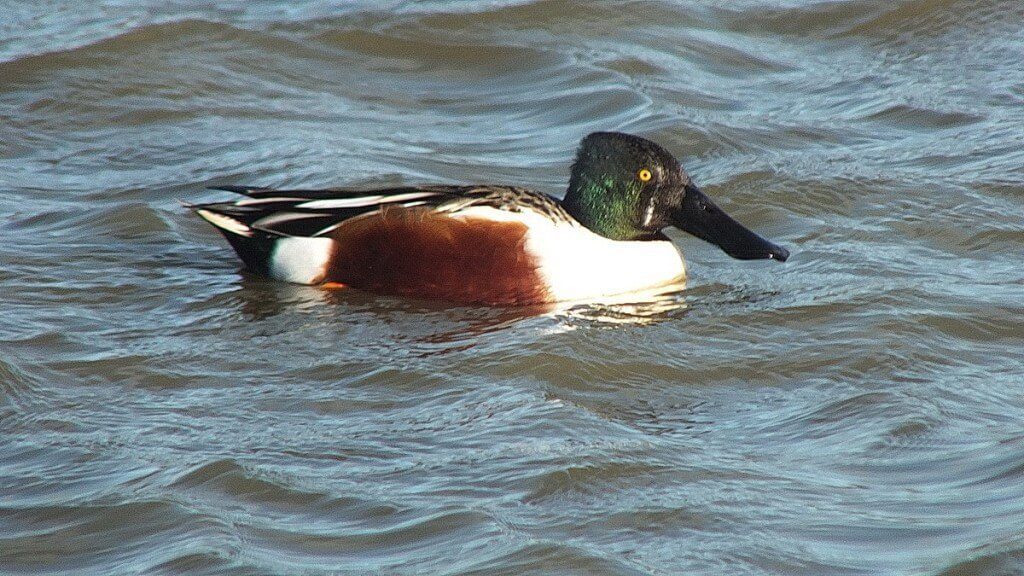

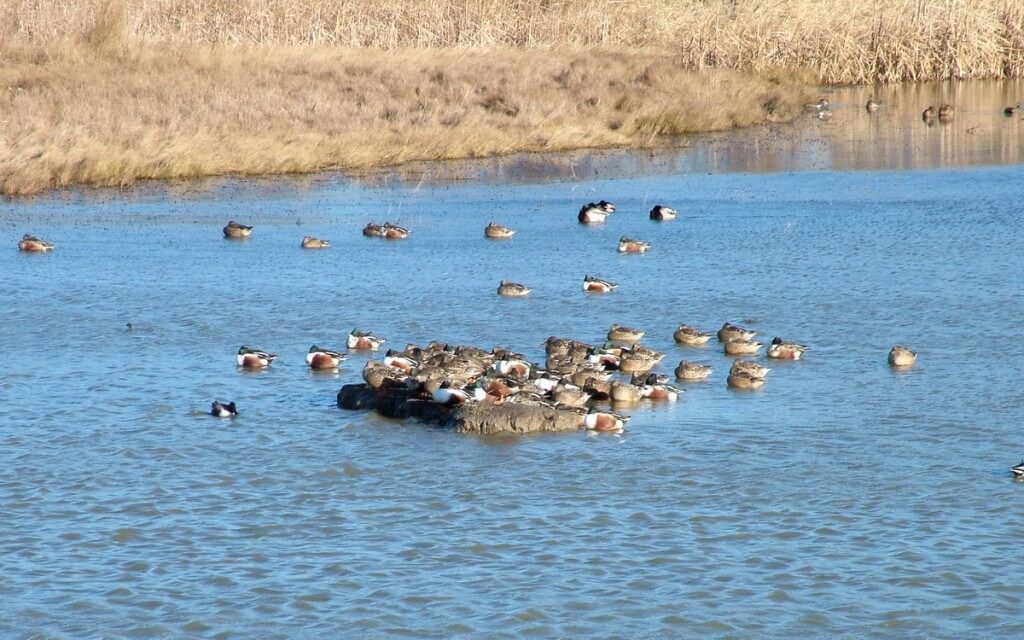
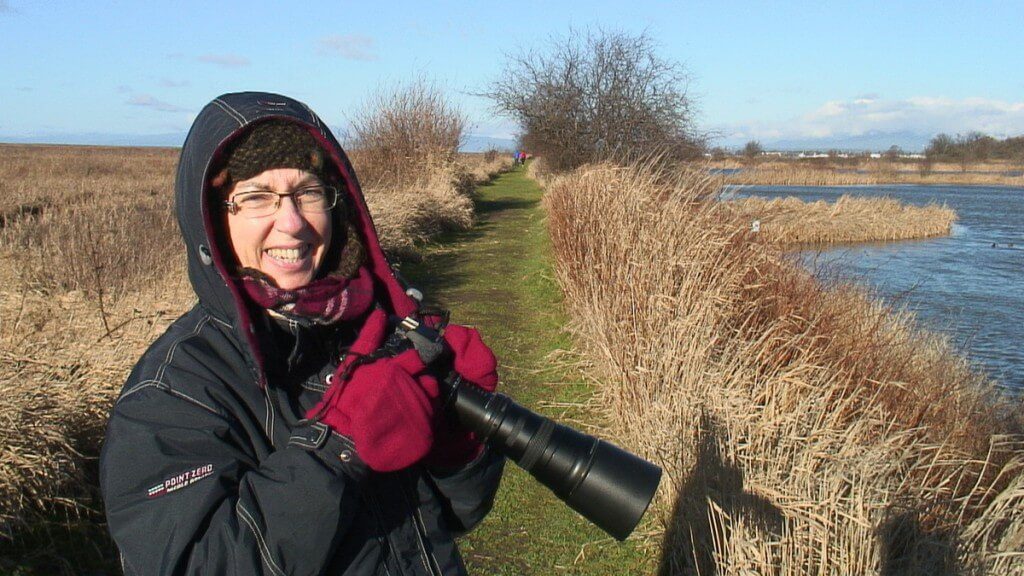
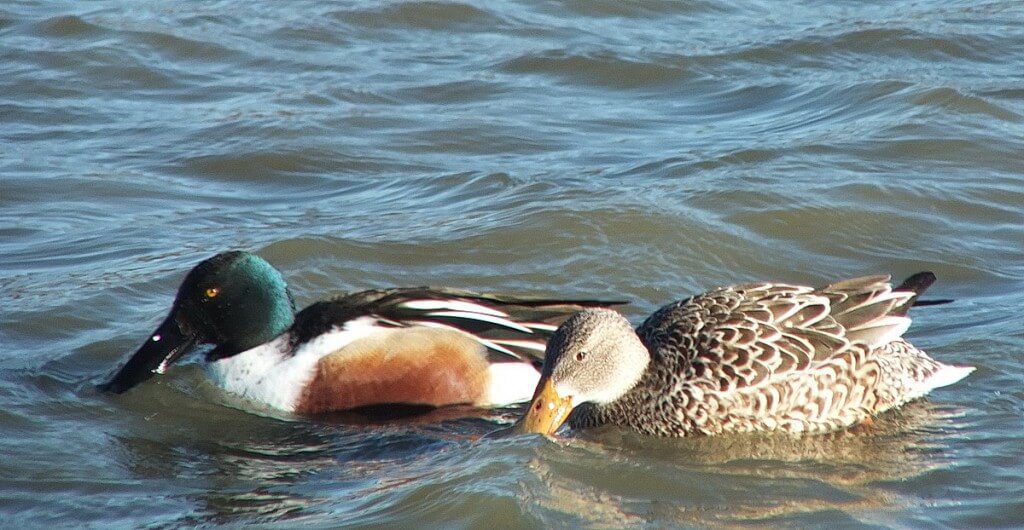
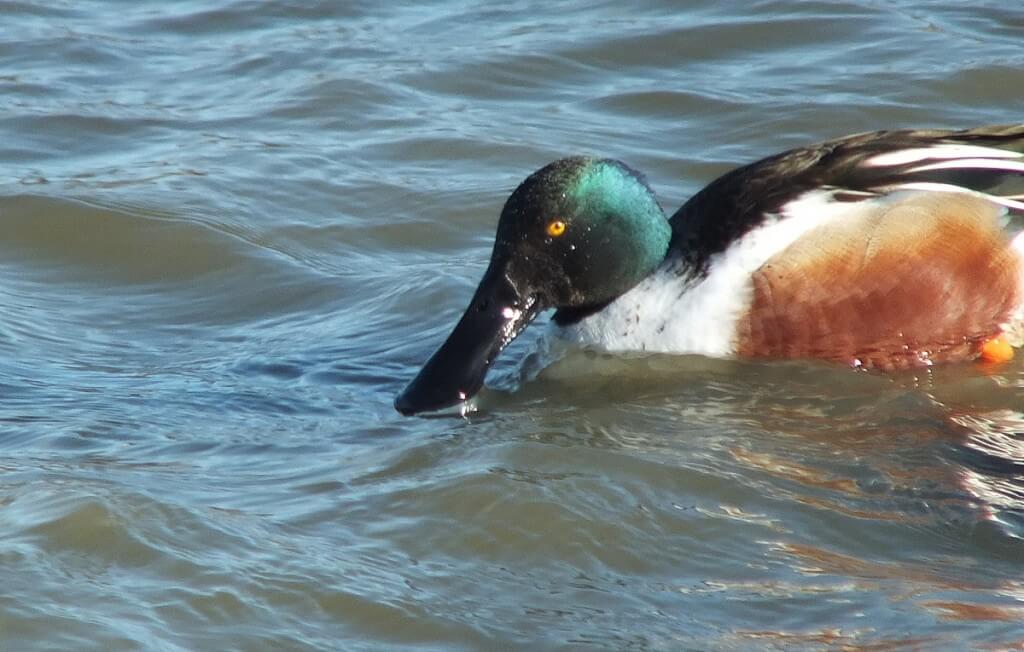
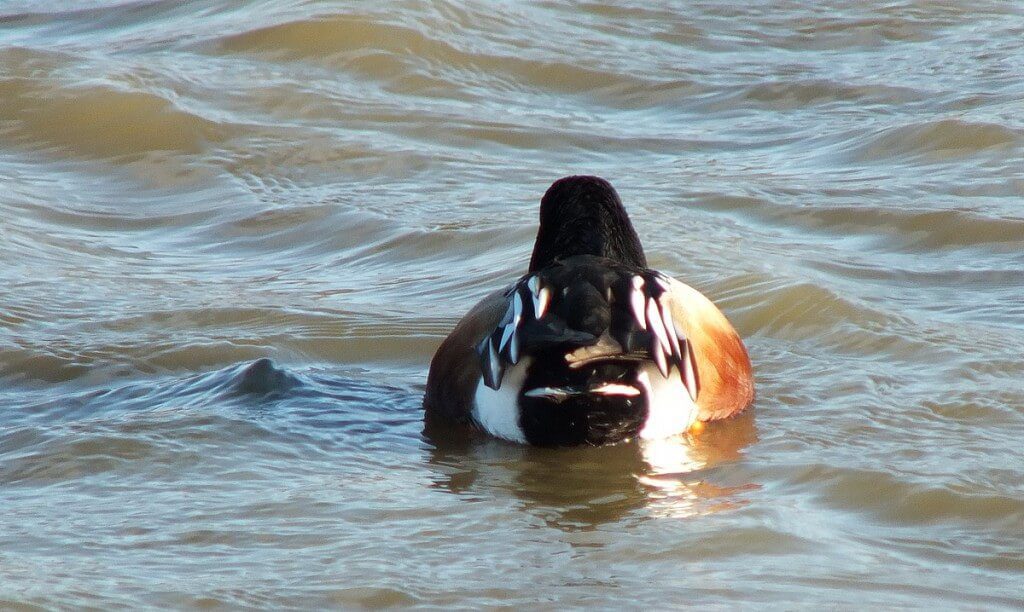
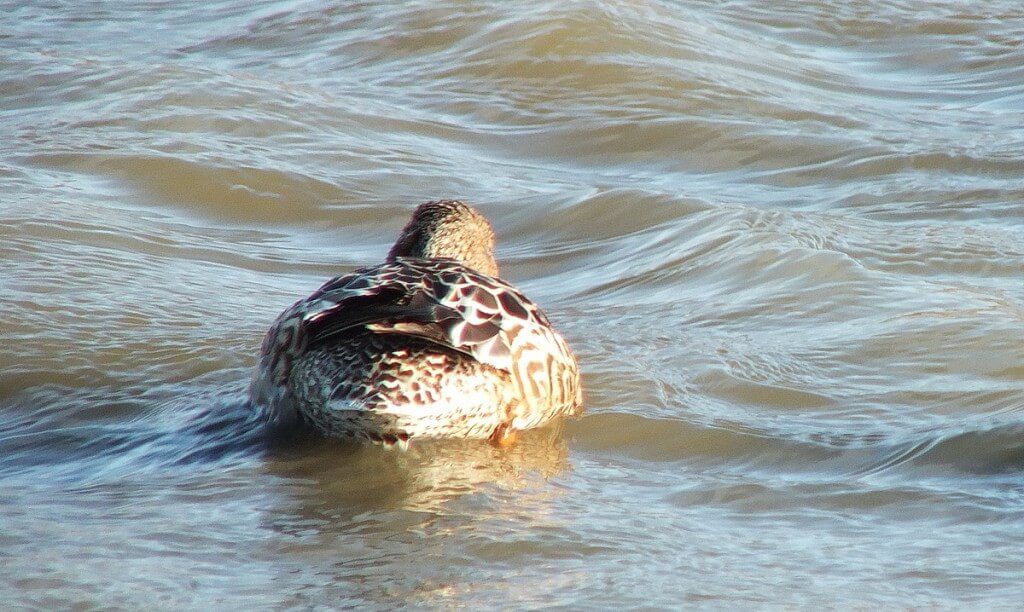
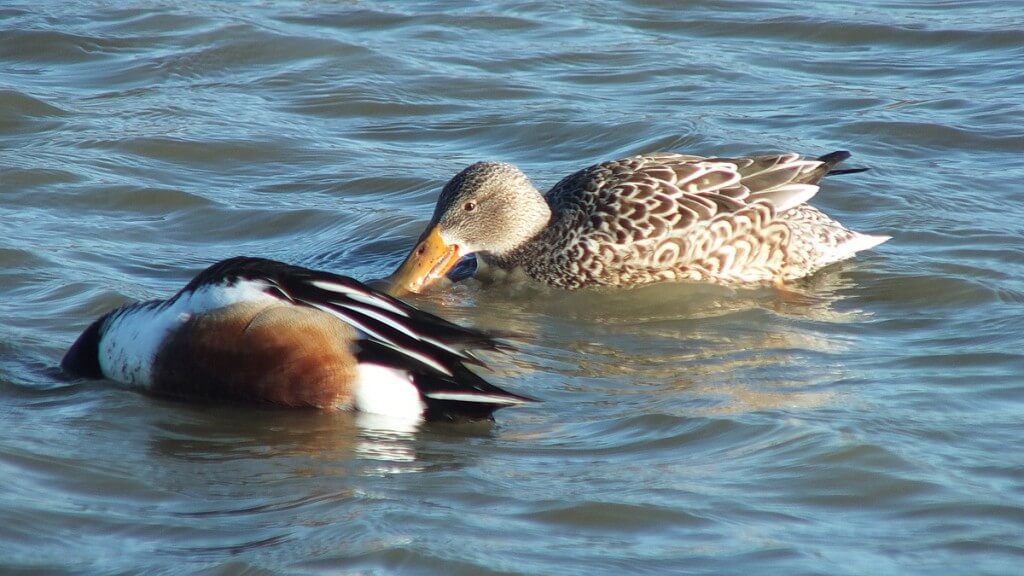
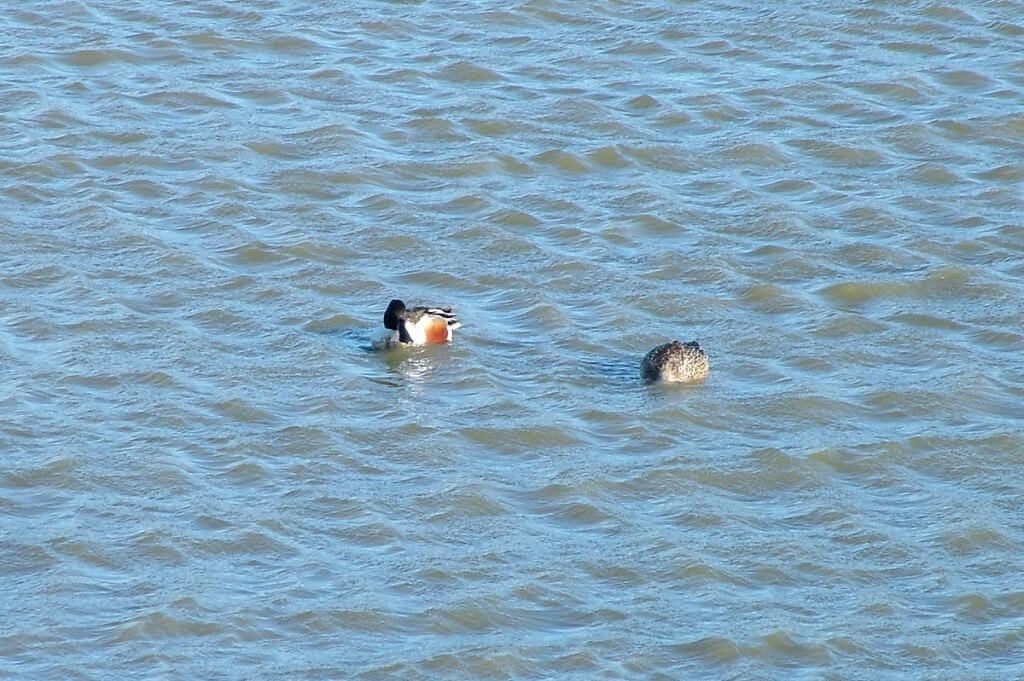
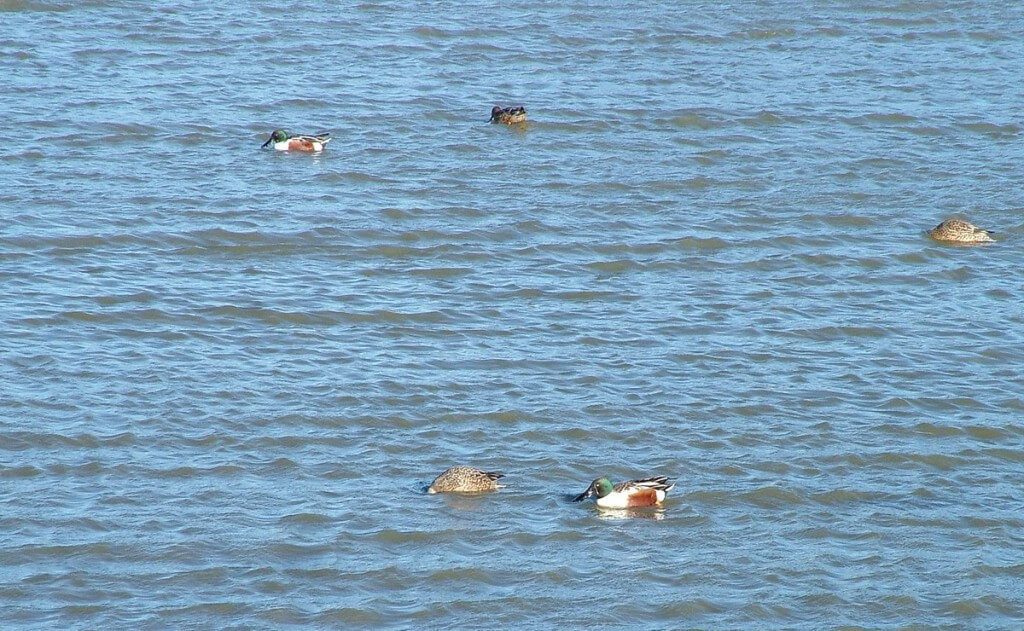
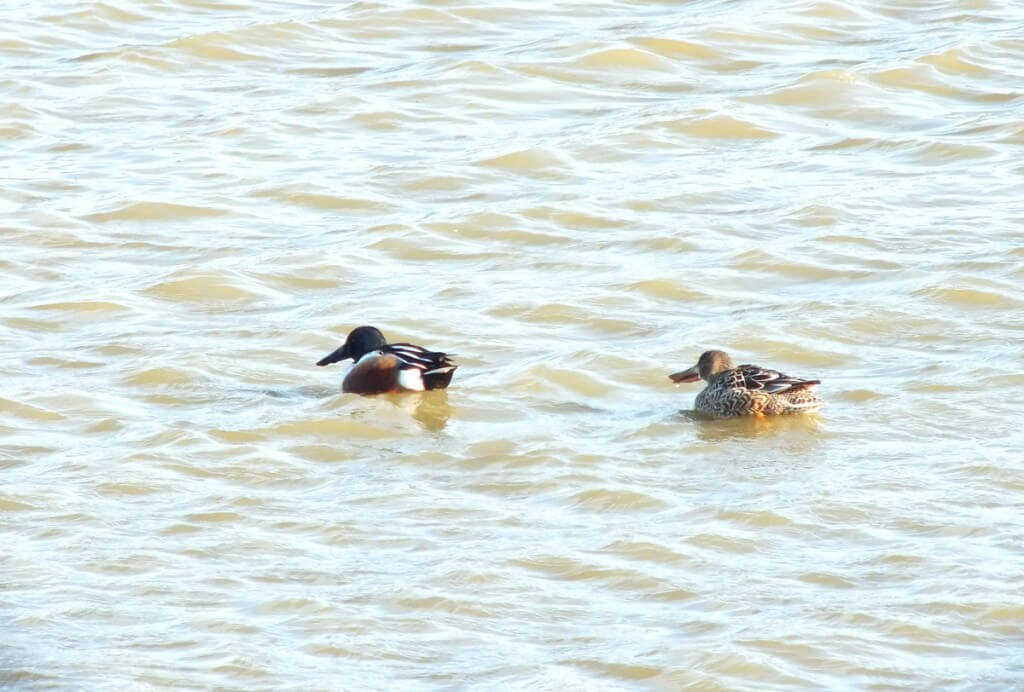
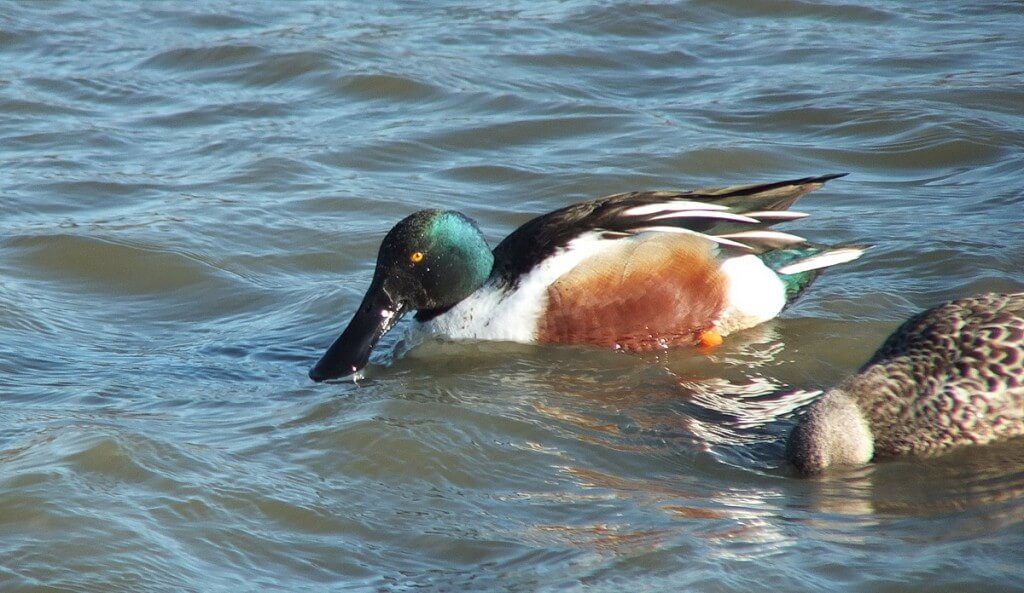
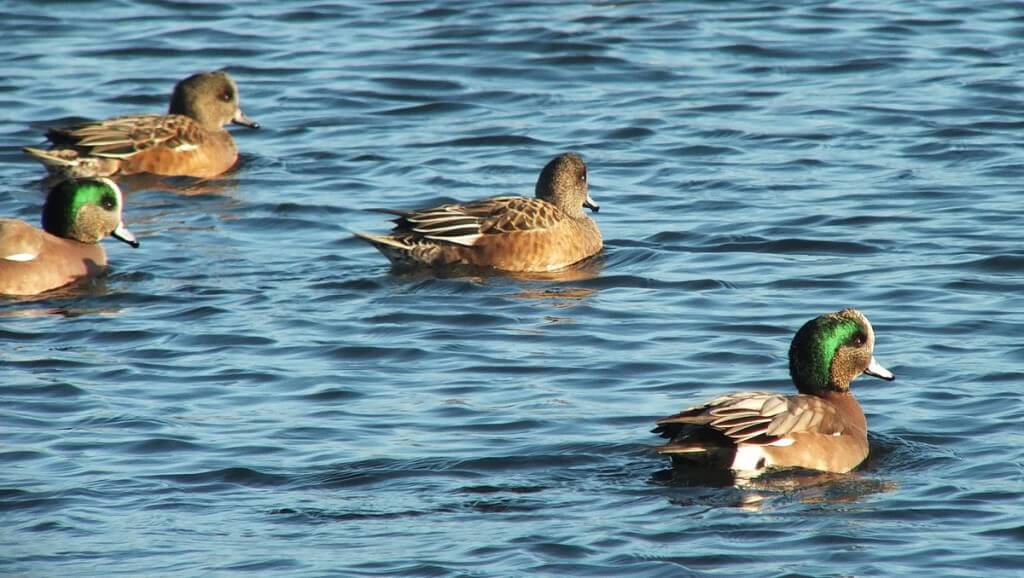
That is quite a unique feeding type. I didn’t realize that there were some ducks who didn’t tip when feeding. That looks like a wonderful place for them to winter.
Thanks for commenting on our story, Bonnie. I knew beforehand that Shoveler Ducks had the distinctive large bills, but I had no idea as to their unique method of feeding. Indeed, the Fraser River estuary is a perfect area for the ducks to winter because of the wonderful habitat available there, but it doesn’t hurt that the temperatures experienced there during the winter months are considerably warmer than other parts of Canada, too.
Just got home from Las Vegas and the Shovelers were there in great numbers at the Henderson Birding Preserve
Lucky you! How nice to see so many of these beautiful ducks. You must have been thrilled. Thanks for letting us know.
Great article! Their ‘pin wheel’ harvesting sounds like it would be neat to see!
thanks for your comment, Renee. I agree and wish we had been lucky enough to see the cooperative effort in action.